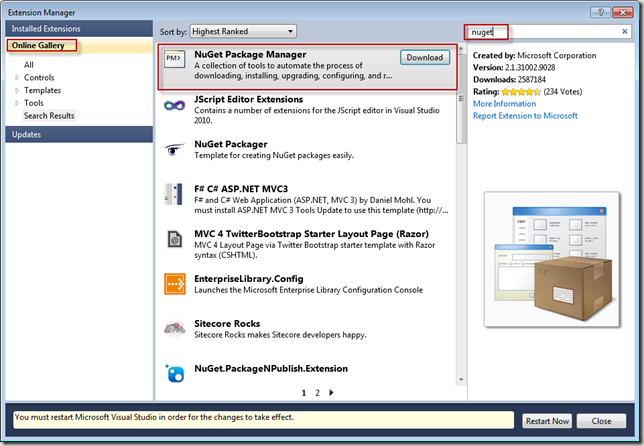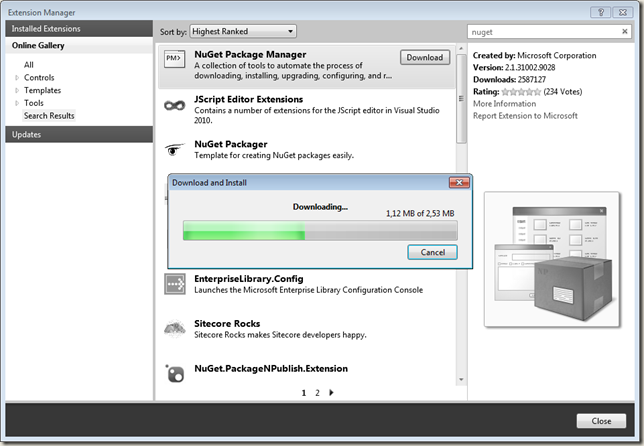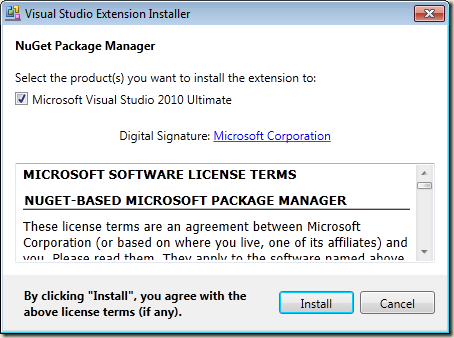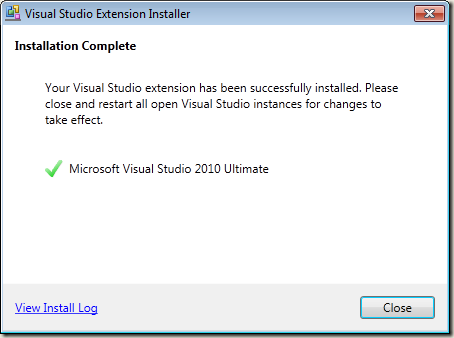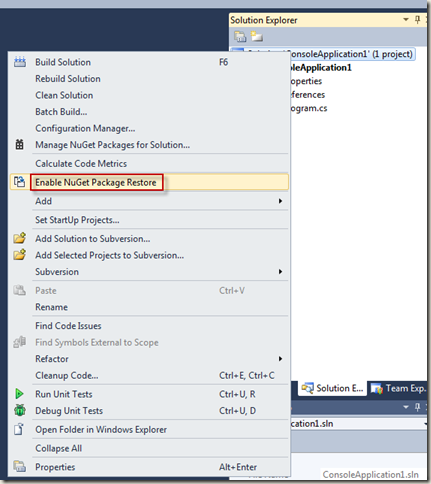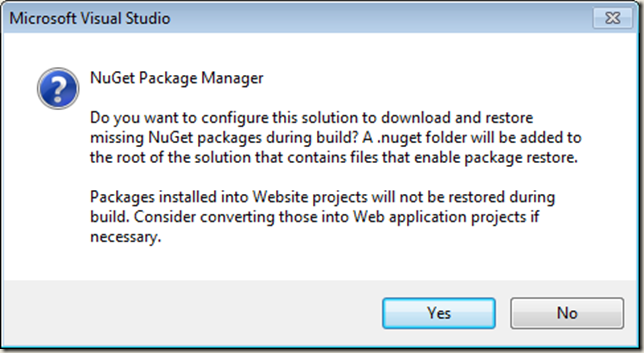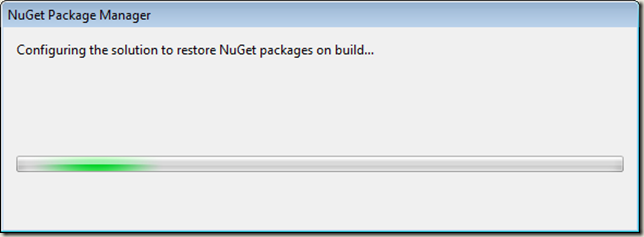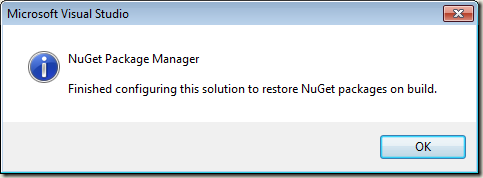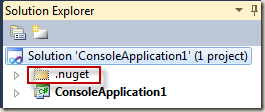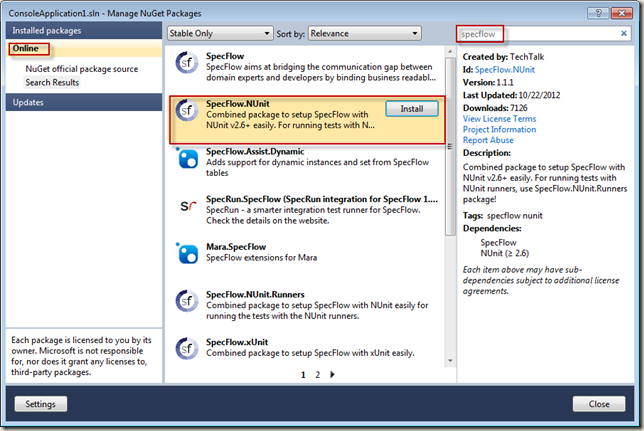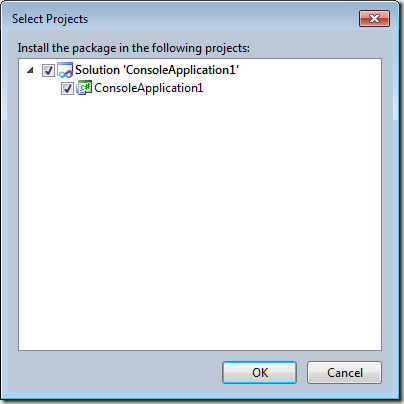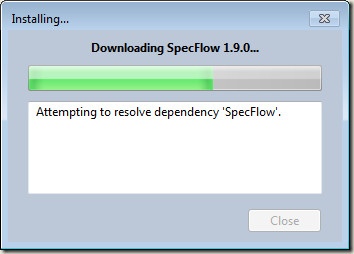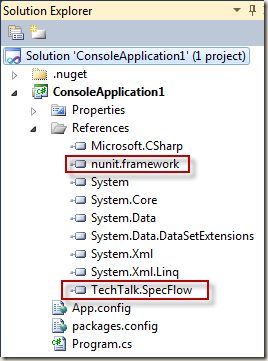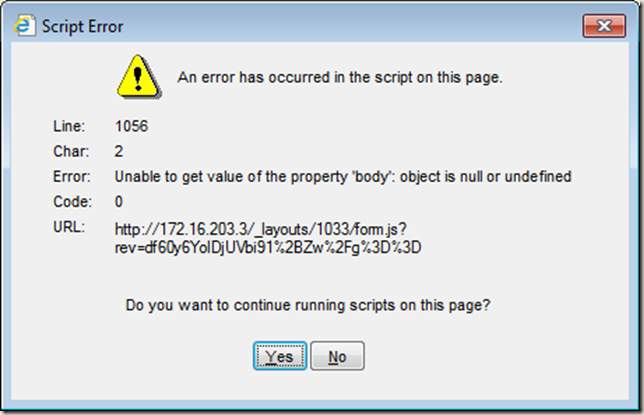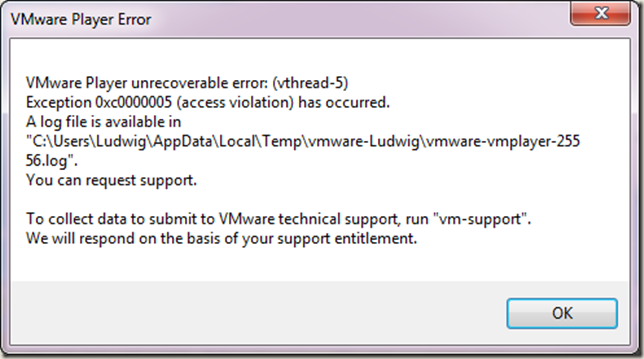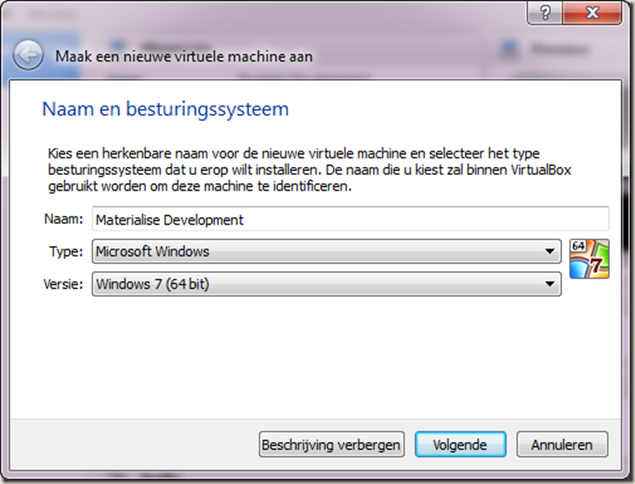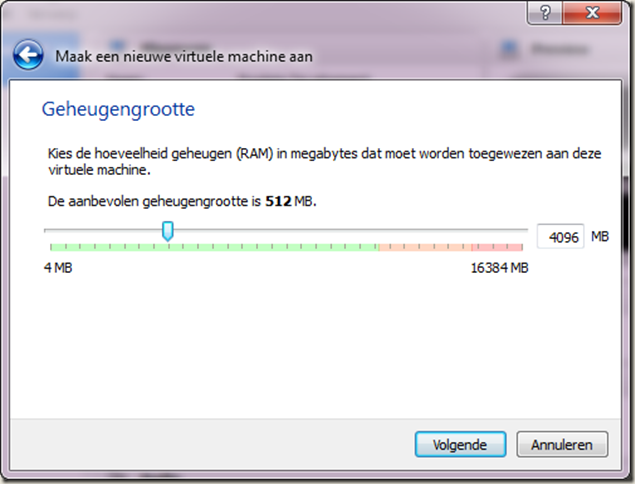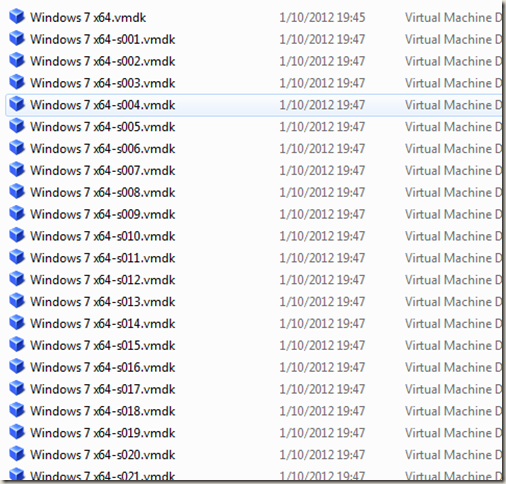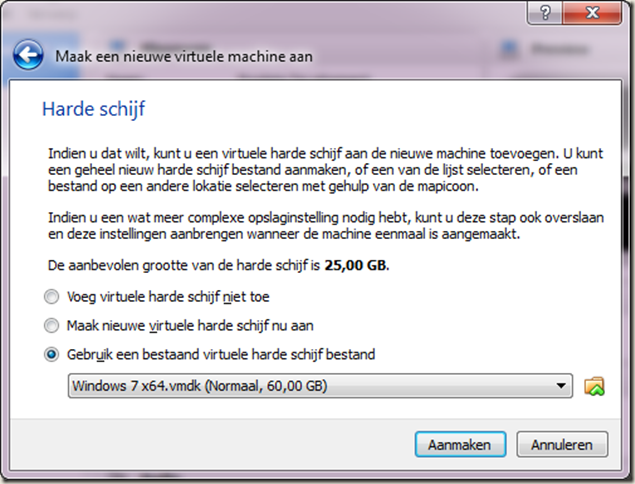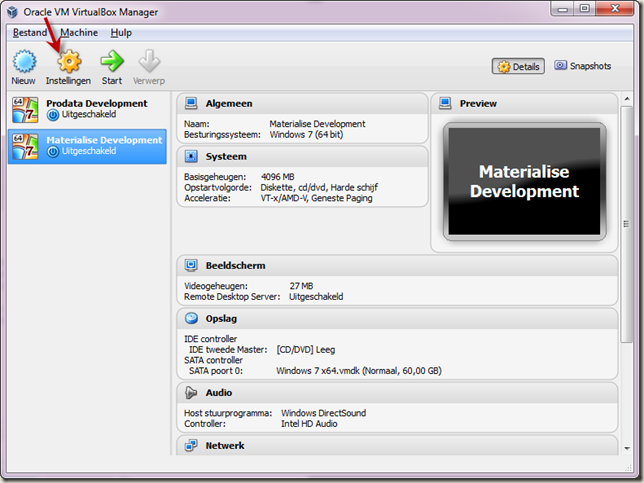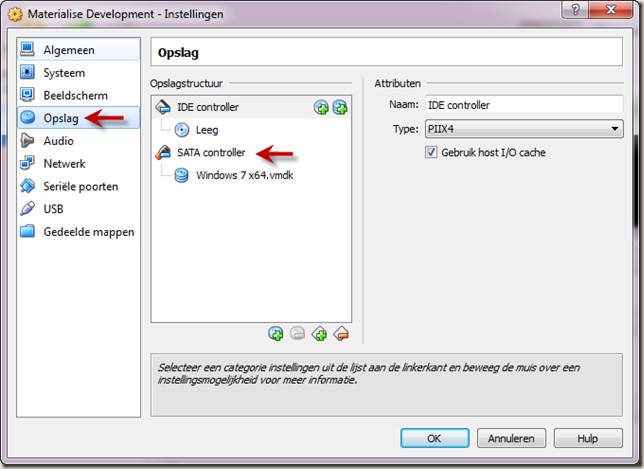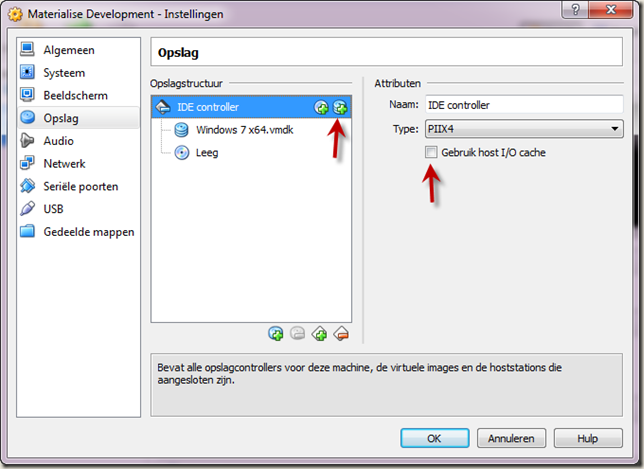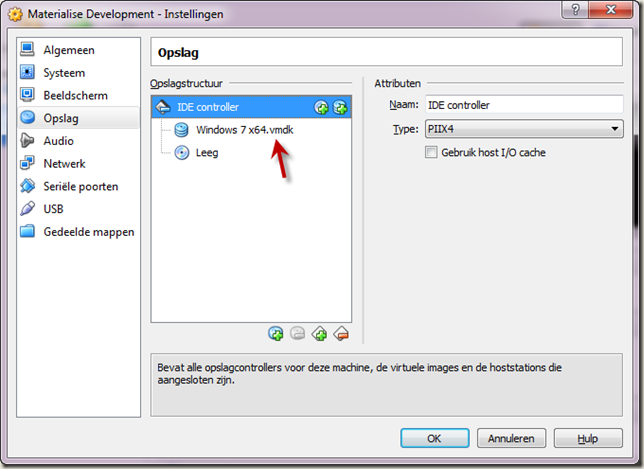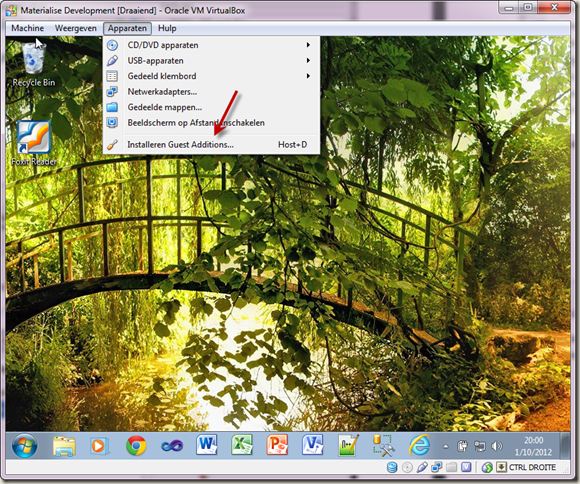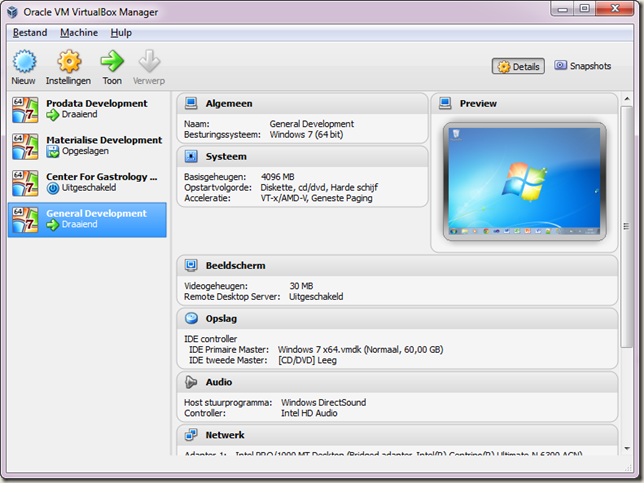In Visual Studio, go to Tools / Extension manager. Select the Online Gallery, and type in ‘nuget’ in the search box:
Click the Download button, and install Nuget Package Manager:
You need to restart VIsual Studio now. After that, if you click on a solution, you can enable Nuget Package Restore:
You will get the following message:
If you click the Yes button, the Nuget Package Restore will make sure that if you build your application, it will automatically download all required packages needed by the solution:
Afterwards, a new solution folder ‘.nuget’ is created:
To add a nuget package, for example the Specflow nuget, right click the solution and select ‘Manage NuGet Packages for Solution…’:
Select ‘Online’, type in the nuget name and click on the Install button next to the nuget you want to install:
If you then look in the references of your project, you will see that the assembly has been added:
Now everyone will be kept up to date with the correct nugets and versions with every build of the solution.

